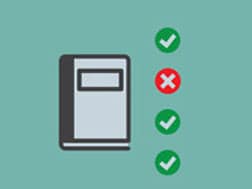Healthcare Respiratory Protection Resources
Program Evaluation
NIOSH Documents
Hospital Respiratory Protection Program Toolkit
This toolkit was developed to assist hospitals in developing and implementing effective respiratory protection programs, with an emphasis on preventing the transmission of aerosol transmissible diseases (ATDs) to healthcare personnel.
Healthcare personnel are paid and unpaid persons who provide patient care in a healthcare setting or support the delivery of healthcare by providing clerical, dietary, housekeeping, engineering, security, or maintenance services. Healthcare personnel may potentially be exposed to ATD pathogens. Aerosols are particles or droplets suspended in air. ATDs are diseases transmitted when infectious agents, which are suspended or present in particles or droplets, contact the mucous membranes or are inhaled.
Implementing Hospital Respiratory Protection Programs: Strategies from the Field
Protecting workers from exposure to all types of respiratory hazards is an important issue for hospitals and other healthcare organizations. In order to address this often overlooked danger, The Joint Commission and Centers for Disease Control and Prevention (CDC), National Institute for Occupational Safety and Health (NIOSH), National Personal Protective Technology Laboratory (NPPTL) have collaborated to develop a new educational monograph designed to assist hospitals in implementing their respiratory protection programs (RPPs).
Preparedness through Daily Practice: The Myths of Respiratory Protection in Healthcare
Evidence from surveillance studies indicates gaps in hospitals’ respiratory protection programmatic operations and healthcare workers’ (HCWs) marginal compliance with respiratory protection recommended practices. Improper use of respiratory protective devices (RPDs) may expose HCWs to infectious respiratory illnesses. In this document, NIOSH addresses common myths related to respiratory protection and provides information to reinforce respiratory protection program administrator responsibilities and HCW knowledge concerning the proper use of these devices so that they can be prepared for the next public health emergency and best protect themselves in daily practice.
Blogs
Respiratory Protection During Outbreaks: Respirators versus Surgical Masks
Consistent use of personal protective equipment (PPE) is an important part of the strategy to protect healthcare professionals from inhaling infectious particles, preventing the spread of respiratory infection between healthcare professionals and patients.
Reaching Towards a Healthier, Safer Workplace: NIOSH looks at healthcare worker familiarity with recommended respiratory protection practices
Researchers at NIOSH conducted a study to determine HCW familiarity with recommended respiratory protection practices including the selection of respiratory protective devices.
Infographics

Key Resources of a Respiratory Protection Program (2015)
Infographic listing the nine key requirements of a respiratory protection program.
English: PDF [1.059 KB], Image [833 KB]
Spanish: PDF [324 KB], Imagen [1,592 KB]
Journal Articles
New respirator performance monitor (RePM) for powered air-purifying respirators
Grinshpun SA; Corey J; Yermakov M; Wu B; Strickland KT; Bergman M; Zhuang Z
J Occup Environ Hyg 2020 Dec; 17(11-12):538-545.
Hospital respiratory protection practices in 6 US states: a public health evaluation study
Peterson K, Novak D, Stradtman L, Wilson D, Couzens L
Am J Infect Control. 2015; 43:63–71.
Evaluation of respiratory protection programs and practices in California hospitals during the 2009-2010 H1N1 influenza pandemic
Beckman-S; Materna-B; Goldmacher-S; Zipprich-J; D’Alessandro-M; Novak-D; Harrison-R
Am J Infect Control 2013 Aug; 41(11):1024-1031.
Differences in hospital managers’, unit managers’, and health care workers’ perceptions of the safety climate for respiratory protection
Peterson-K; Rogers-BME; Brosseau-LM; Payne-J; Cooney-J; Joe-L Novak-D
Workplace Health Saf 2016 Jul; 64(7):326-336
Clearing the air: surgical smoke and workplace safety practices
Harkavy-LM; Novak-DA
OR Nurse. 8(6):1-7, November 30, 2014.
Proper use of surgical N95 respirators and surgical masks in the OR
Benson-SM; Novak-DA; Ogg-MJ
AORN J 2013 Apr; 97(4):457-470.
Perceived competence and comfort in respiratory protection: results of a nationwide survey of occupational health nurses
Burgel-BJ; Novak-D; Burns-CM; Byrd-A; Carpenter-H; Gruden-M; Lachat-A; Taormina-D
Workplace Health Saf 2013 Mar; 61(3):103-115.
Criteria for the Collection of Useful Respirator Performance Data in the Workplace
Janssen-L; Zhuang-Z; Shaffer-R
J Occup Environ Hyg 2014 Apr; 11(4):218-226.
